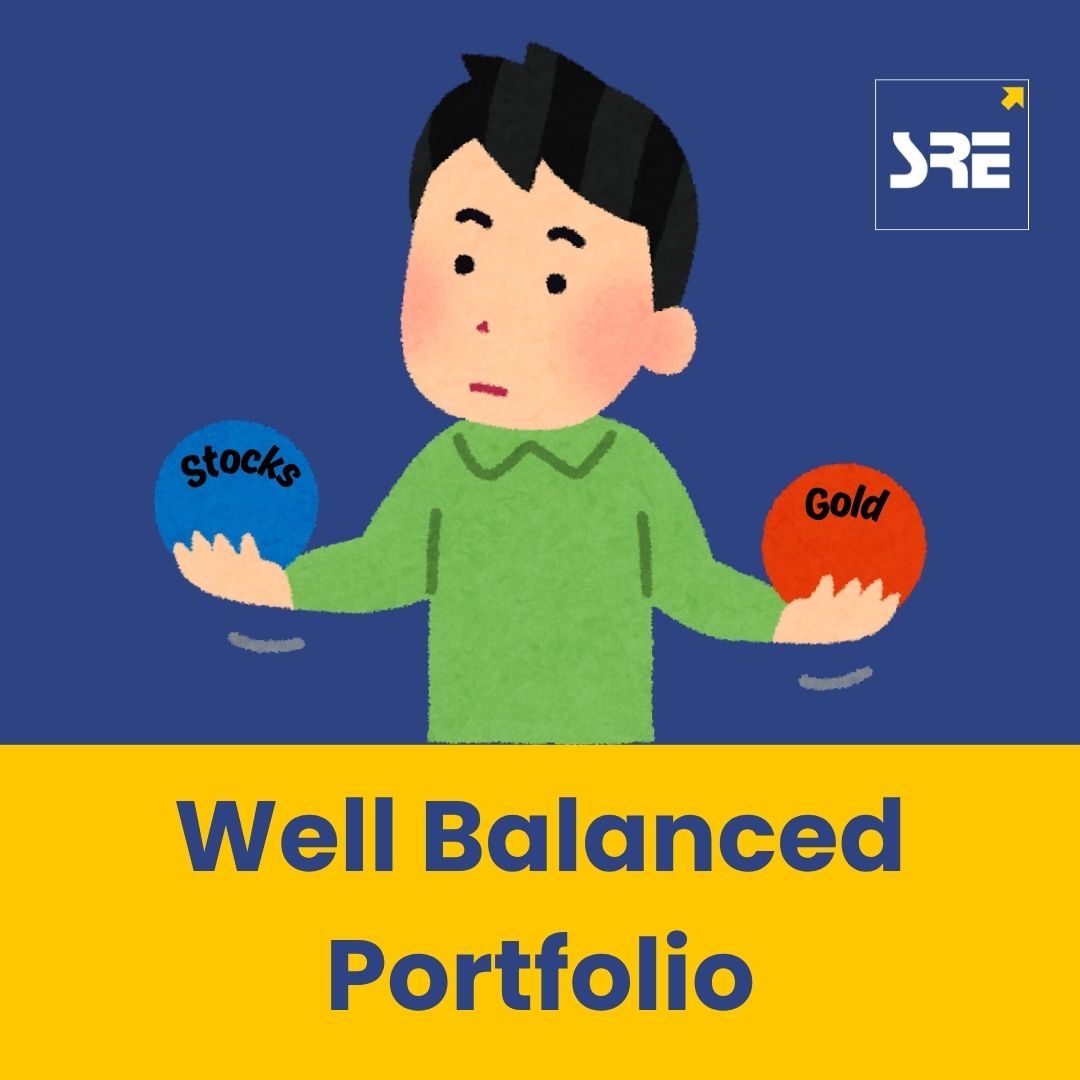
How to Create a Well-Balanced Investment Portfolio in 2025
by SRE Desk on 01 Aug 2025 06:07:34
Overall RATE (0.0)
A Comprehensive Guide by SRE – One of the Best Brokerage Firms in India
Introduction
Investing isn't about chasing trends or counting on luck. It's a planned approach to match your money moves with your life dreams, how much risk you can handle, and how long you've got. In today's ever-changing money world, a mixed bag of investments works like a money shield—it softens the blows while keeping your big dreams in sight.
At SRE, we give investors the know-how to build their own varied portfolios—while also offering ready-made options like SIPs mutual funds, and PMS for those who want pro help. This guide will show you the ins and outs of creating a balanced investment portfolio in 2025.
What Is a Balanced Portfolio?
A balanced portfolio refers to an investment strategy that distributes your assets across various classes—primarily equity (stocks), debt (fixed-income instruments), and sometimes commodities, real estate, and global exposure. The core idea is to balance risk and return.
In a balanced portfolio:
-
Equities offer higher returns but come with volatility.
-
Debt instruments provide stability and regular income.
-
Commodities and alternatives (like gold or REITs) serve as hedges against inflation or equity downturns.
Think of your portfolio like a diet: a mix of nutrients ensures long-term health. Similarly, asset diversification ensures financial well-being.
Balanced portfolios are not static. They evolve based on market conditions and personal life stages. In 2025, with increased market volatility and macroeconomic shifts, having a diversified and adaptable portfolio is more critical than ever.
Why Diversification Is Non-Negotiable
Diversification isn’t just about reducing risk—it’s about ensuring resilience. When you diversify, you spread investments across assets that react differently to the same event. For example:
-
When stock markets fall due to economic slowdown, government bonds may rise in value.
-
When inflation surges, gold and real estate often perform better.
-
When domestic equity underperforms, international ETFs might deliver strong returns.
Without diversification, you become overly reliant on a single asset’s performance, increasing your exposure to unexpected market downturns.
A well-diversified portfolio doesn’t eliminate risk but makes it manageable and predictable. At SRE, we often say, "Diversification buys you time and patience to grow your wealth."
How to Build a Balanced Portfolio in 2025
Let’s break it down into actionable steps.
1. Assess Your Risk Appetite and Investment Goals
Before you invest, take a hard look at your own profile:
-
What are your financial goals? (retirement, home purchase, education)
-
When do you need the money?
-
Can you stomach a market dip of 20%?
Use SRE’s risk assessment tools to categorize yourself as:
-
Conservative: prioritize safety, prefer fixed-income instruments
-
Moderate: okay with moderate market swings for better returns
-
Aggressive: ready to ride high volatility for long-term growth
Your risk tolerance will directly impact your asset allocation.
2. Define Time Horizons for Each Goal
Link your investments to specific, time-bound goals:
-
Short-term (0-3 years): vacation, emergency fund, wedding
-
Medium-term (3-5 years): car, house down payment
-
Long-term (5+ years): retirement, child’s education
Each goal may need a different investment vehicle. For example, don’t put your 2-year vacation fund into small-cap equities.
3. Choose the Right Asset Allocation Mix
A sample template:
|
Risk Profile
|
Equity
|
Debt
|
Alternatives
|
|
Conservative
|
20%
|
70%
|
10%
|
|
Moderate
|
50%
|
40%
|
10%
|
|
Aggressive
|
70%
|
20%
|
10%
|
Use mutual funds, ETFs, and direct stocks for equity exposure. Choose a mix of liquid funds, corporate bond funds, and PPF for debt.
4. Diversify Within Each Asset Class
Don’t just invest in equity—invest across sectors, market caps, and geographies:
-
Equity: mix of large-cap, mid-cap, small-cap for robust equity trading
-
Debt: short-term, long-term, government securities, corporate bonds
-
Alternatives: gold ETFs, international funds, REITs
Diversification within asset classes reduces sectoral and issuer-specific risks.
5. Leverage Mutual Funds & SIPs
Not everyone has time to track the markets. That’s where mutual funds in India and SIPs come in:
At SRE, one of the best discount brokers in India, you can explore curated SIP baskets based on your risk level.
6. Rebalance Periodically
Your portfolio will drift as markets move. Rebalancing ensures you:
-
Lock in profits from over-performing assets
-
Re-align with your original strategy
-
Avoid unintended risk exposure
Set a calendar reminder every 6-12 months or automate the process using SRE’s dashboard.
7. Monitor but Don’t Panic
Markets go through cycles. Reacting emotionally leads to poor decisions. Instead:
-
Track your portfolio quarterly
-
Readjust only if your goals or risk profile changes
-
Avoid following social media fads
Remember, investing is a marathon, not a sprint.
Common Mistakes to Avoid
-
Putting all money in trending stocks or funds
-
Ignoring debt or over-investing in equity
-
Not linking investments to clear goals
-
Reacting emotionally to market downturns
Final Thoughts from Team SRE
A balanced portfolio isn’t just about financial security—it’s about clarity, confidence, and control. By aligning your investments with your goals and using the principles of diversification, you position yourself for sustainable wealth growth.
As a brokerage firm in Mumbai offering top-notch financial services, SRE is committed to helping you invest smarter. From personalized investment advice to low-cost platforms, we help you become a confident investor.
Ready to build a portfolio that reflects your life?
Get started with SRE today — one of the best share market brokers in India.